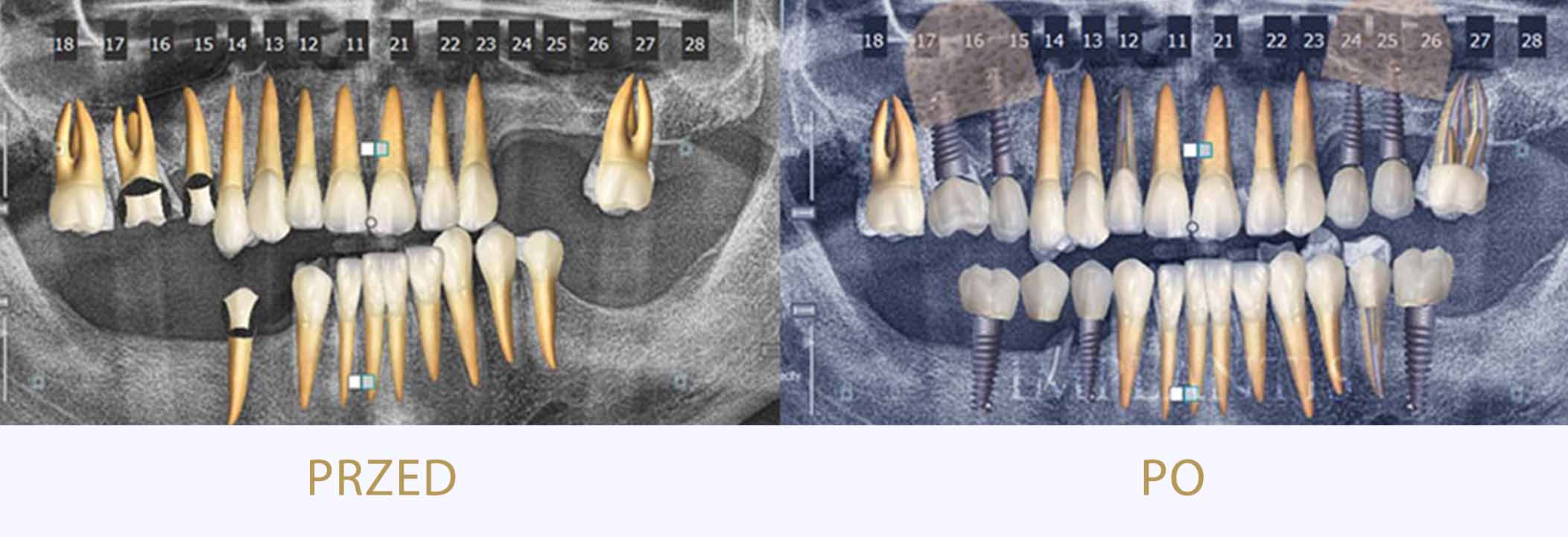
Dentist Kraków
Oral surgery in Krakow
Dentist kraków
Oral Surgery
Oral Surgery
Dental extractions
It might happen that you need a tooth extraction for any number of reasons. Some teeth are extracted because they are severely decayed; others may have advanced periodontal disease, or have broken in a way that cannot be repaired. Other teeth may need removal because they are poorly positioned in the mouth (such as impacted teeth), or in preparation for orthodontic treatment.
The removal of a single tooth can lead to problems related to your chewing ability, problems with your jaw joint, and shifting teeth, which can have a major impact on your dental health.
To avoid these complications, in most cases, our dental surgeon will discuss alternatives to extractions as well as replacement of the extracted tooth.

Sinus Lift
The maxillary sinuses are behind your cheeks and on top of the upper teeth. These sinuses are empty, air-filled spaces. Some of the roots of the natural upper teeth extend up into the maxillary sinuses. When these upper teeth are removed, there is often just a thin wall of bone separating the maxillary sinus and the mouth. Dental implants need bone to hold them in place. When the sinus wall is very thin, it is impossible to place dental implants in this bone.
The key to a successful and long-lasting dental implant is the quality and quantity of jawbone to which the implant will be attached. If bone loss has occurred due to injury or periodontal disease, a sinus augmentation can raise the sinus floor and allow for new bone formation. A sinus lift is one of the most common bone grafting procedures for patients with bone loss in the upper jaw. The procedure seeks to grow bone in the floor of the maxillary sinus above the bony ridge of the gum line that anchors the teeth in the upper jaw. By strengthening and growing bone in this location, dental implants can be placed and secured in the new bone growth.
Bone Augmentation / Bone Graft
For dental implants to be successful, the jawbone must have enough bone to support them. Tooth loss often leads to more loss of bone over time.
The tooth loss may be caused by:
- Periodontal (gum) disease
- Dental caries (cavities) and infection
- Injury or trauma
- A defect in development
If the bone under your gum is not tall enough, not wide enough or both, you will need a procedure to add bone to your jaw before implants can be placed.
Bone augmentation is a term that describes a variety of procedures used to “build” bone so that dental implants can be placed. These procedures typically involve grafting (adding) bone or bonelike materials to the jaw. The graft can be your own bone or be processed bone (off the shelf) obtained from a cadaver. After grafting, you have to wait several months for the grafted material to fuse with the existing bone. “Off?the-shelf” grafted materials either cause surrounding bone to grow into the graft or cause cells around the graft to change into bone. A graft from your own bone transplants bone cells or a block of bone that fuses to the jaw.
Several different procedures can be used for bone augmentation. Your dentist will select one depending on the type, location and number of implants to be used. If you need a bone graft, it is important that you and your dentist discuss all of the options available to you.
After bone augmentation, dentists usually wait four to nine months before placing implants.
Leave us your telephone number and we will contact You back
Oral surgery

